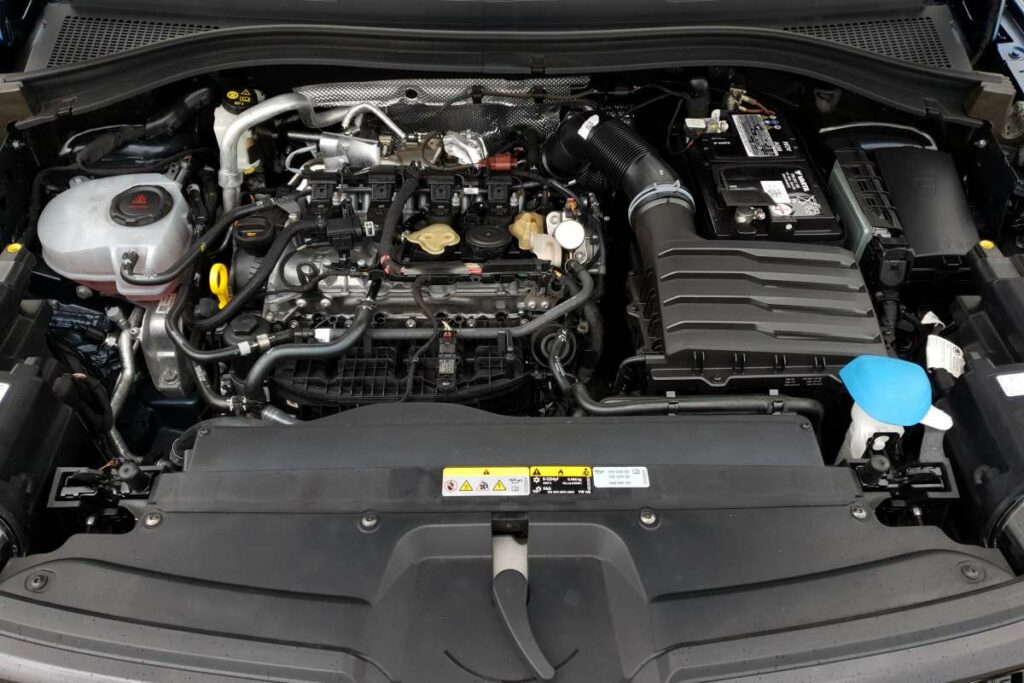2022 Skoda Kodiaq RS review: Family-friendly practicality

 PUBLISHED ONJuly 11, 2022 10:50 AMByBen Chia
PUBLISHED ONJuly 11, 2022 10:50 AMByBen ChiaIf you want a seven-seater SUV that has the ability to go rather fast, because perhaps you’re a lunatic who likes to freak out your extended family members, as of now there are three options on the market for you in Singapore.
There’s the Mercedes-AMG GLB 35, which is decently quick, but just about barely fits the seven-seater criteria. There’s also the Audi SQ7 that we test drove recently, which can properly frighten some supercars, but also scare your wallet into submission with its monstrous and thirsty V8 engine.

And then now there’s this, the Skoda Kodiaq RS, which is a hotted-up version of Skoda’s otherwise docile seven-seater Kodiaq SUV. It is a level down from the Merc and Audi in terms of prestige and price, but it’s also interesting to see Skoda offering what is essentially quite a niche product.
There’s a slightly perverse kick to the idea of a car that can carry seven people and still hurtle across the highway at highly illegal speeds, but truthfully, the Kodiaq RS though is really more mild than hot in the performance stakes, despite its status as the speed king of the Kodiaq line-up.

Powering the car is the same 2.0-litre turbocharged four-pot engine that also sees service in the Volkswagen Golf GTI and Skoda Octavia RS. In this application the unit churns out 245hp and 370Nm of torque, mated to a seven-speed dual-clutch gearbox. This makes the Kodiaq RS good for a 0-100km/h sprint time of 6.6 seconds, and a top speed of 233km/h.

Sounds good on paper, but in reality the Kodiaq RS doesn’t quite feel as exciting as its figures suggest. It is brisk undoubtedly, and it has the ability to get you in trouble with the Traffic Police, but it does it with very little sense of drama, save for the rather fruity soundtrack that’s courtesy of the sports exhaust resonator out the back.
Aside from that though, the Kodiaq RS doesn’t really feel very much different from any other moderately powerful SUV.

It does have its strengths however, and rather surprising ones at that. The car comes with adaptive suspension which gives it some pretty decent handling chops, although of course there is a limitation to how much it can defy physics and there remains some degree of body roll under hard cornering.
At the same time though, the suspension also gives the Kodiaq RS a rather comfortable ride, certainly much better than what you’d expect from a sports-oriented model.

As a family SUV though, the Kodiaq mostly ticks all the requisite boxes. There’s plenty of space for occupants, even in the third row where legroom is pretty okay for an average adult, although there are no air con vents for those who end up there. The cabin also gets some sporty touches, such as the RS-branded sports seats with red stitching, and paddle shifters for the steering wheel.









It comes rather well-equipped too, with standard features including matrix LED headlights, a panoramic sunroof, heated and ventilated seats, 360-degree camera, wireless smartphone charger, adaptive cruise control, and lane keeping assistance and guidance.

Externally, the car gets a blacked-out grille, a slightly more aggressive front lower lip, a few RS badges throughout, and some rather unique 20-inch wheels that is purportedly meant to aid with aerodynamic efficiency, but other than that it’s hard to tell the car apart from a regular Kodiaq at first glance.

Which probably suits the car’s understated nature anyway. In any case, while its price tag of $288,900 with COE isn’t exactly what you’d call cheap, it is still the most affordable seven-seater performance SUV currently in Singapore (albeit in a segment with few competitors).
The Kodiaq RS’ combination of family-friendly practicality and sense of speed effectively puts it in a class of its own, even if it’s not quite the exciting sports car that its badge pedigree suggests.

ALSO READ: Skoda launches Octavia Combi RS and Kodiaq RS in Singapore
This article was first published in CarBuyer.